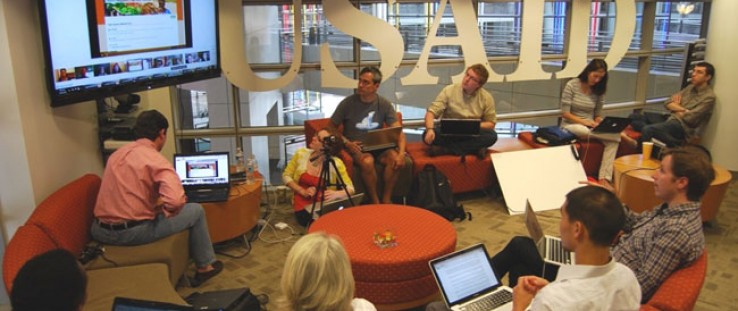 Eight teams participate virtually for final presentations at USAID’s hunger hackathon.
Elvira Felix
Eight teams participate virtually for final presentations at USAID’s hunger hackathon.
Elvira Felix
 Eight teams participate virtually for final presentations at USAID’s hunger hackathon.
Elvira Felix
Eight teams participate virtually for final presentations at USAID’s hunger hackathon.
Elvira Felix
Geeks. Coders. Hackers. Developers. Computer scientists. Technologists.
Whatever they call themselves, people with technical acumen have proven to be some of the most prolific volunteers for social good. And on any given weekend in nearly every major city around the world, volunteers with smarts and talent gather to create products that benefit education, security, the economy and other social interests.
These events—dubbed “hackathons,” “codeathons” or “codesprints”—stretch over 48 hours and end with tech-heads presenting their efforts to a panel of judges, including experts in data, entrepreneurship and industry, who have their own experience with hacking their way to success.
That’s just what happened on a weekend in the middle of September as USAID hosted Hacking for Hunger, an online and in-person confab of technical people, designers, storytellers and development experts who pitched proposed solutions to core problems in food security outlined by experts months earlier.
Beginning Friday night and working throughout the weekend, participants from five countries and seven time-zones gathered in person at USAID’s Innovation Lab in Washington, D.C., and online at community sites like Facebook, Skype, Google+ Hangouts and HackPad.
Working around the clock, teams were evaluated on Sunday afternoon by a panel of judges and experts in food security, open data, entrepreneurship and open government based on incorporation of open data, how easy their project was to use, and its relevance to food security.
“Global Hunger is one of the most important challenges of our generation. Almost a billion people are going to bed hungry every night,” explained Julie Howard, chief scientist in USAID’s Bureau for Food Security, in her kick-off remarks for the event. “Over the past few years, we’ve come to understand the long-term impact of food insecurity: The cycle of poverty, stunted cognitive abilities, and diminished capacity have long-term impact on the ability of families and communities and countries to develop. So hunger is really at the core of economic and human transformation in development.”
Winning teams included applications that recommended crops to plant based on geolocation and on nutrition needs, and a crowd-sourced map to combat land-grabbing in Ethiopia. These winners and other teams showcased their work Oct. 16 during the week-long World Food Prize events in Des Moines, Iowa.
Sue Heinen, minister of the U.S. Department of Agriculture’s Foreign Agricultural Service, served as Hacking for Hunger’s food security judge and praised the Grameen Foundation and Palantir Technologies for working together on a tool that made the full loop from farmer to multinational corporation and back to the farmer. Using sophisticated software to analyze varied datasets—including weather, soil, market prices and farmer feedback—the tool identified a maggot outbreak and sent an alert about the potential spread to farmers at risk.
Heinen praised the team for addressing the “topical issues of diseases and how to attack those quickly using a number of different sources of data that could get the message out quickly to those on the ground.”
Yet, in spite of the accolades, crowning a top techie was not the overarching goal of the event.
“Codeathons are a great way to bring software developers and subject matter experts together as creative teams to transform open data, raw material for digital innovation, into solutions to pressing problems,” Aman Bhandari, senior adviser to the U.S. chief technology officer. “It is inspiring to see private and philanthropic organizations, as well as government agencies like USAID, supporting codeathons and other approaches to make valuable stores of data available in useful formats so citizen solvers around the world can use them to make a difference.”
In fact, the hackathon is just the latest demonstration of USAID’s participation in the U.S. Government’s Open Data Initiative, an effort to make government information more widely available to people who can turn the reams of data into something that is useful, accessible and citizen-friendly, whether through mobile phone apps or other tools.
A Growing “Hacktivist” Community
Using a three-part event structure designed by Todd Park, the U.S. chief technology officer, USAID launched the Food Security Open Data Challenge, Hacking for Hunger’s umbrella initiative, to source data and problem statements, build solutions for evaluation, and showcase their impact. The challenge kicked off with an Ideation Jam, or brainstorming session, in July. Food security experts from government agencies and academia, smallholder farmers, Silicon Valley whizzes and developing-country tech specialists gathered to outline major issues and identify how data could be useful. This first event ensured that participants in the hackathon had relevant information before starting work on their projects so the proposed solutions would be useful.
Moffatt Ngugi, a climate expert in the Bureau for Food Security and a challenge participant, said that at USAID, “we work at very granular levels and there’s so much information. By using data, we can see the broader effect and the bigger picture. We can still be laser-focused, but (also) can be aware of how all these pieces are affecting each other.”
Organizers of the hackathon also say they want USAID’s staff and partners to recognize the rapidly growing community of activists and “hacktivists” that are seeking to learn from the information the Agency gathers to develop solutions. “That’s why I really think it’s important to get all of these people in the same room—to get different fields and perspectives together and see how they are affecting each other,” Ngugi said.
Calling All Data
In fact, the tech-savvy community is forging a new tradition of volunteering with USAID to make data sets more accessible. Gathering in the same Innovation Lab months before, USAID staffers Stephanie Grosser and Shadrock Roberts convened almost 400 virtual and in-person volunteers to “scrub” data from the Agency’s Development Credit Authority (DCA), or loan-guarantee program, rendering the data “machine-readable”—formatted for integration into a computer program.
Volunteers set aside the full weekend, but by turning the U.S. Government website Data.gov into a crowdsourcing platform, all data cleanup was complete in just 16 hours. They are now available on www.data.gov and the DCA website, complete with APIs (application programming interfaces) to build on the data.
These efforts in making data open are targeted at improving the work of entrepreneurs and USAID. “With the release of DCA’s data and associated map, entrepreneurs in developing countries can discover existing lending facilities in the sectors in which they work, USAID missions can analyze guaranteed loans across borders for a more complete picture of development impact, and donors can overlay their guarantee data onto USAID’s to increase future opportunities for collaboration. These are just a few of the immediate impacts of opening up our data,” said DCA Director Ben Hubbard.
No Magic Bullet
The purpose of Hacking for Hunger was not to uncover a magic bullet that will solve the world’s food security issues. Instead, officials hoped to connect with a growing community of advocates, innovators and entrepreneurs.
When asked why she was participating in her third hackathon, Samantha Snabes, a winner of NASA’s SpaceApps competition, replied: “Because we learned … your code, your hacks and your solutions have the potential to facilitate a community of users and contributors that endure well beyond one codeathon. And that’s pretty cool.”
The hackathon model is not the only method of opening data or making more information available and useable.
“One way is to convene experts in your field and consider the biggest problems you face and what information would be useful in addressing that problem,” said Ricardo Michel, deputy director of USAID’s Office of Innovation and Development Alliances. He added, addressing his development colleagues, “we want to work with you to make that information more available and useable.”
In an increasingly wired world, USAID is just beginning to reap the benefits of open data as a powerful tool and force for transformation. “Data not only measures progress,” said Secretary of State Hillary Rodham Clinton, in her support of the initiative, “it inspires it.”
To get involved in development data at USAID and start your own open data challenge, contact Kat Townsend at rtownsend@usaid.gov or Nat Manning at nmanning@usaid.gov. Visit idea.usaid.gov/opendata for additional information and to follow up with any of the winning teams.
The Players
Hack for Hunger teams set out to build new applications using data related to global food security. Teams from established organizations like Grameen Bank, Palantir Technologies and USAID; small startups including Digital Green, Sonjara and GeoWiki; and proof-of-concept upstarts like the Pineapple Project and Grower’s Nation sculpted problems, mission statements and projects that they could achieve over the weekend.







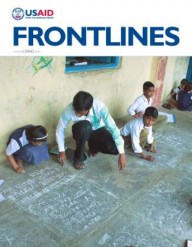

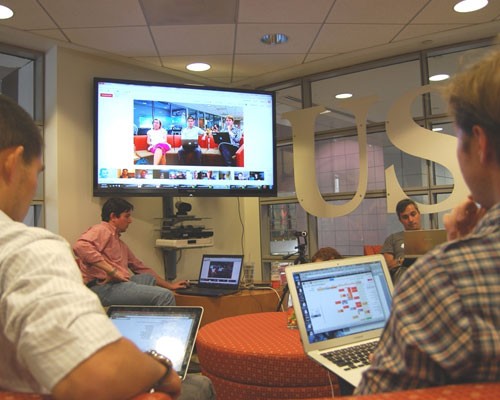
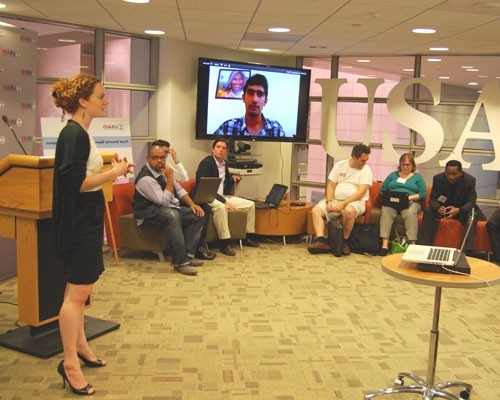
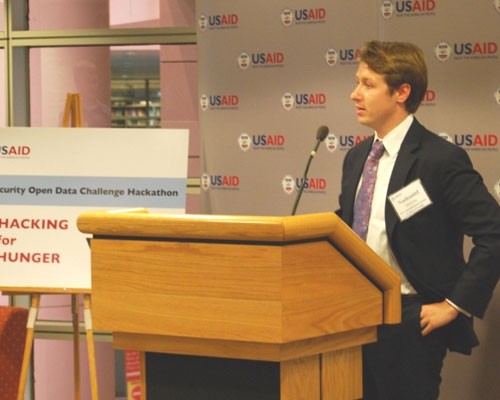
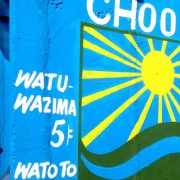
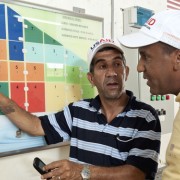
Comment
Make a general inquiry or suggest an improvement.